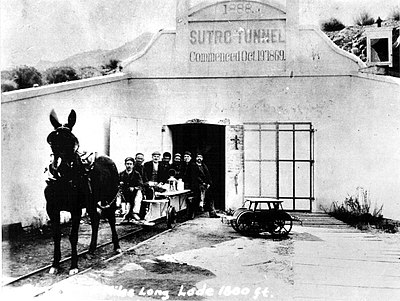
Sutro Tunnel has been shrouded in mystique for decades. Inaccessible to most, the isolation sheltered the 1860s ghost town from the passage of time. The non-profit group Friends of Sutro Tunnel is restoring this fascinating piece of Nevada history and has opened Sutro for tours.

The Water Curse
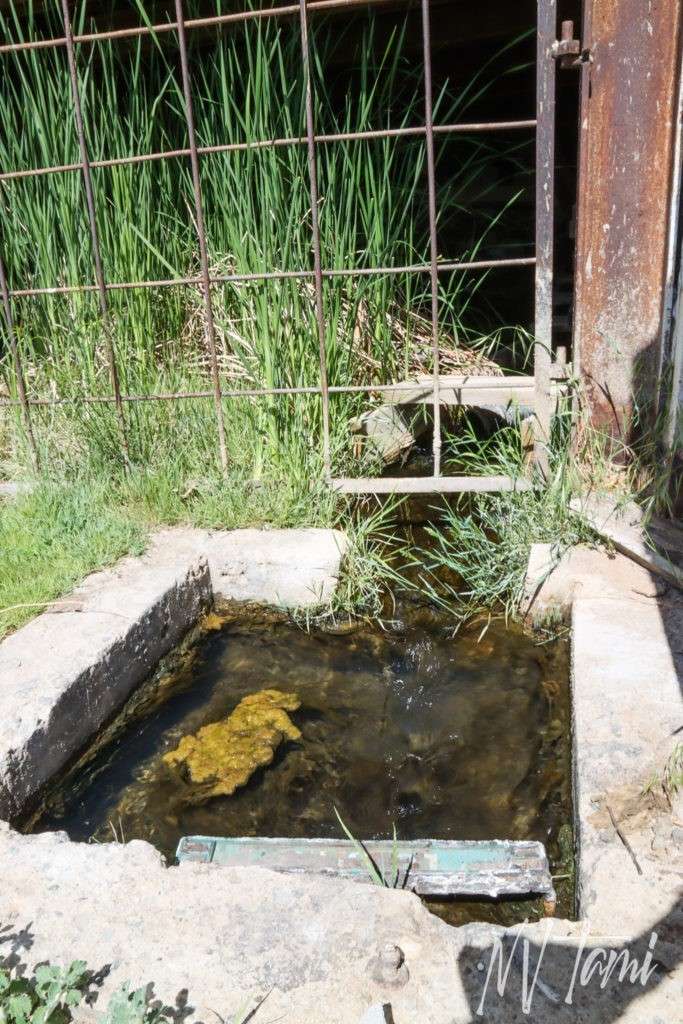
Processing ore from mining requires water. Mines often go to extensive lengths to secure access to water.
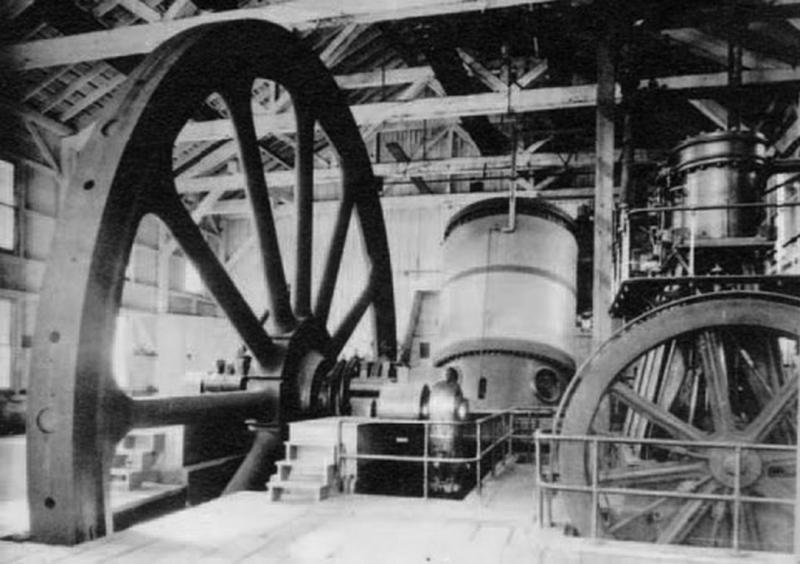
(Photo credit: WNHPC)
Surface water below the earth is another story. Mine shafts filled with water, making them inaccessible to miners. Despite pumps alleviating some of the issues in the Comstock Lode, they often could not keep up with the flow rates.
An Innovative Solution
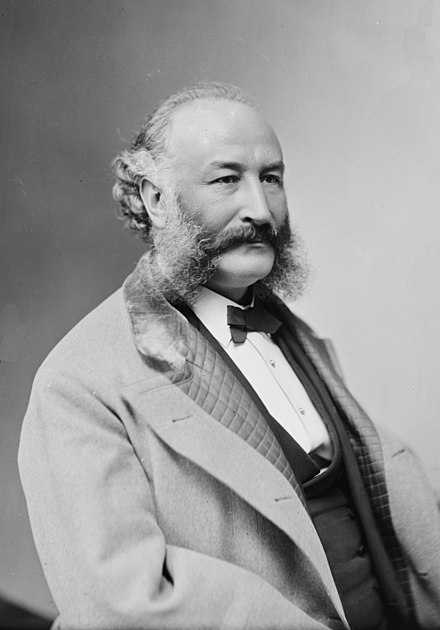
In 1860, Prussian engineer Adolf Sutro proposed a new solution to Comstock water issues. Instead of pumping water to the surface, a tunnel could allow drainage from the mine shafts. The tunnel would also allow for ventilation and cost-effective ore transportation and supplies. The famous author Mark Twain said Adolf Sutro was…
..one of the few men in the world who is gifted with the pluck and perseverance necessary to follow up and hound such an undertaking to its completion.
Mark Twain

Sutro’s tunnel would be an astonishing four miles long. It would connect Virginia City and Gold Hill mines to Dayton and the Carson River.
Financing
Sutro fought an uphill battle to finance the tunnel. He won approval for the tunnel by federal and state legislation in 1865. However, mining companies that originally supported the tunnel changed their minds, fearing it would compete with their monopoly.
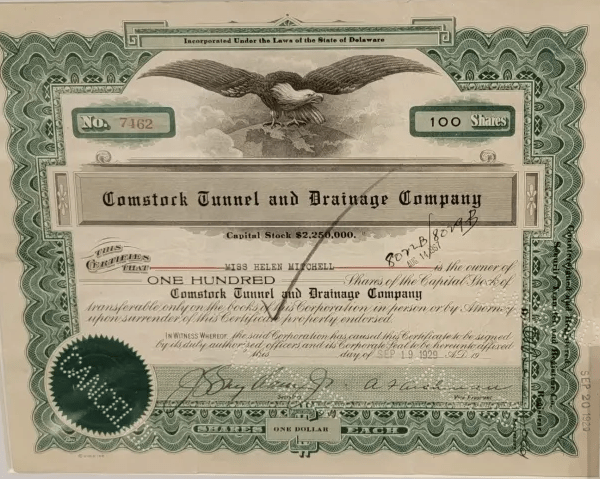
Sutro tirelessly promoted the tunnel in America and Europe and raised funds for construction. The Sutro Tunnel Company began selling stock certificates in 1869.
Yellow Jacket Mine Fire

The Yellow Jacket mine fire on April 7, 1869, was one of the worst mining disasters in Nevada history. A methane fire ignited by an unattended lamp broke out 800 feet below the surface. As the day crew was lowered into the mine, timbers smoldered and collapsed spilling poisonous gases into the Yellow Jacket mine, along with the nearby Kentuck and Crown Point Mines.

Firefighters attempted to rescue miners and extinguish the fire but they were pushed back by heat and flames. The few survivors describe the horrendous scene of miners fighting to survive. Over 35 people died, and 11 bodies were never recovered. Had the fire occurred mid-shift instead of at shift change, the fatalities would have been even higher.
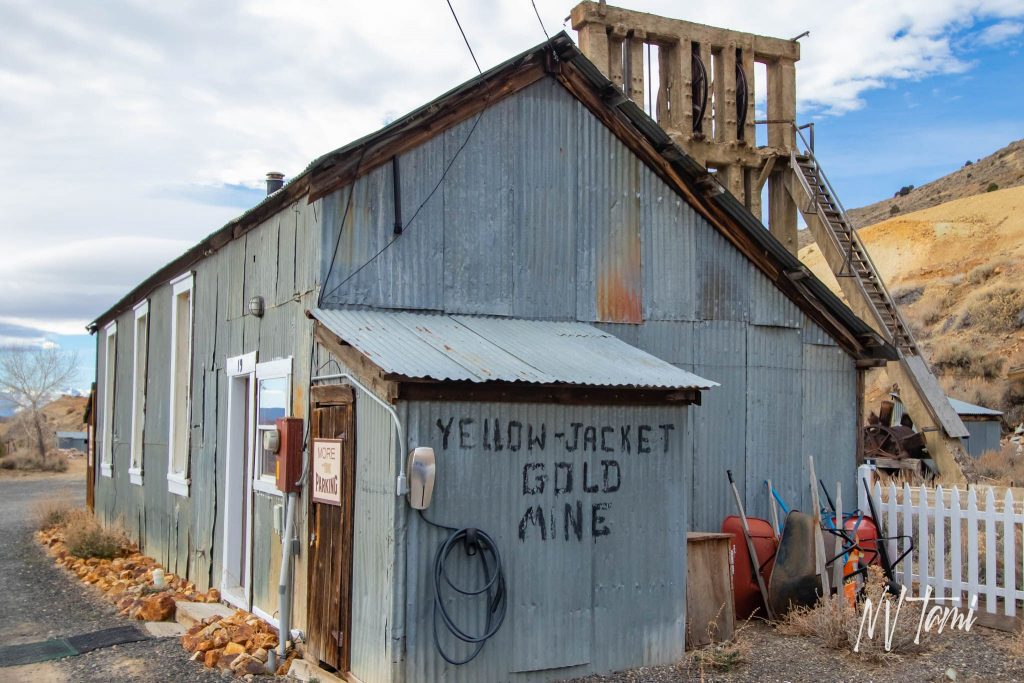
Had the Sutro Tunnel been available, miners may have been able to escape to safety. Companies and fraternal organizations looking for safer conditions in the mines provided additional funding for the tunnel.
Opening of the Sutro Tunnel
With great fanfare, Adolf Sutro broke ground on his tunnel on October 19, 1869. Despite inclement weather, a band kicked off the event, and participants paraded to the planned mouth of the tunnel. They enjoyed a meal of spit-roasted beef, oven-roasted pork, fresh bread, and beer.
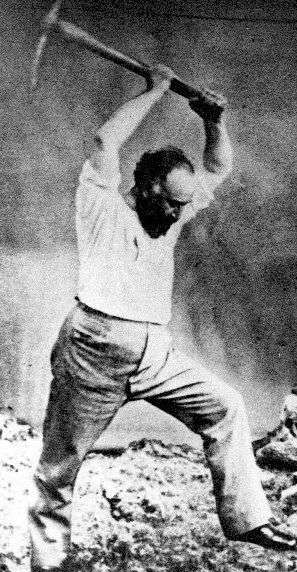
Sutro stood ready with pick slung over his shoulder as the Gold Hill Miners Brass Band played Star-Spangled Banner, and the flag was raised. Lacking his usual fanfare, Sutro said a few words and then swung. Now famous author Dan De Quille made the second swing, followed by President of the Workingmen’s Association, James Phelan.

After almost nine years of construction, the Sutro Tunnel connected the Savage Mine in Virginia City with Sutro outside Dayton and the Carson River on July 8, 1878. The tunnel was 10′ high by 12′ wide, 3.88 miles long, with branches totaling 4.56 miles. During the 1880s, it drained 3,500,000 gallons of water daily.

Eliot Lord, the author of Comstock Mining and Miners, referred to the Sutro Tunnel as the…
…greatest mining enterprise in America
Elliot Lord
Sutro Tunnel continued to operate for sixty-five years, draining water from the mines of the Comstock. With the onset of WWII, non-essential operations were discontinued, including mines. Sutro Tunnel was closed in 1943, and equipment was repurposed to support the war effort.
Renaissance
In 2016, volunteers led by Pam Abercrombie began restoring and preserving the Sutro Tunnel and Ghost Town. The site was transferred to the non-profit Friends of Sutro Tunnel on January 5, 2021.
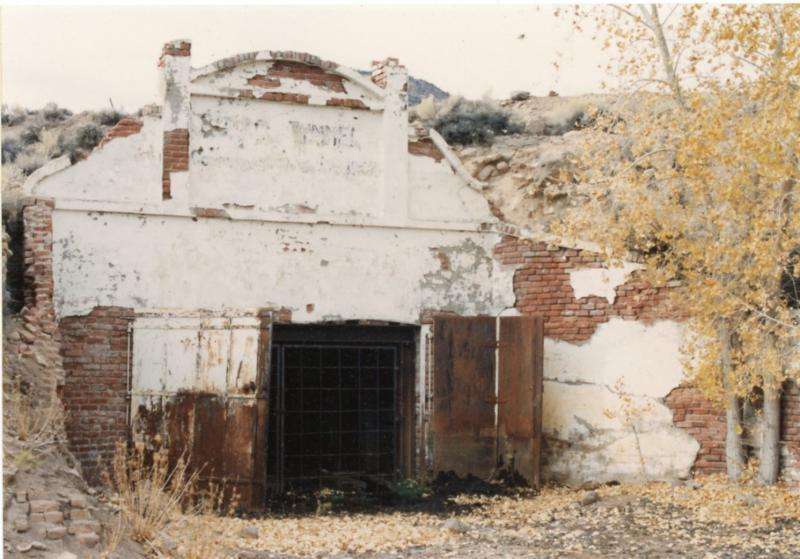
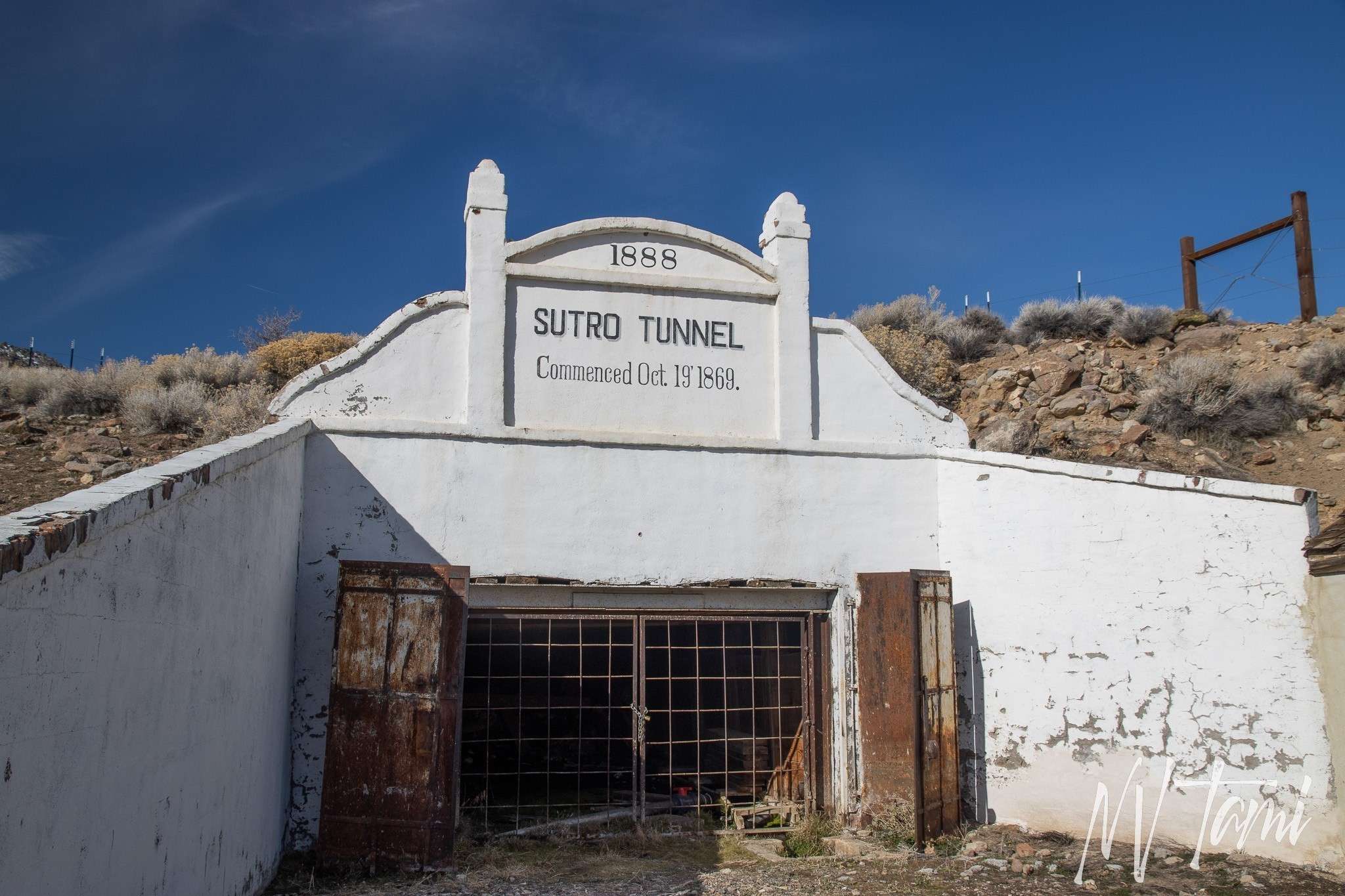
Friends of Sutro have made amazing progress in a short time. In April of 2021, aspen grew at the portal, and reeds and willows grew in the tunnel. By December, volunteers had removed foliage, and restoration on the portal had begun.
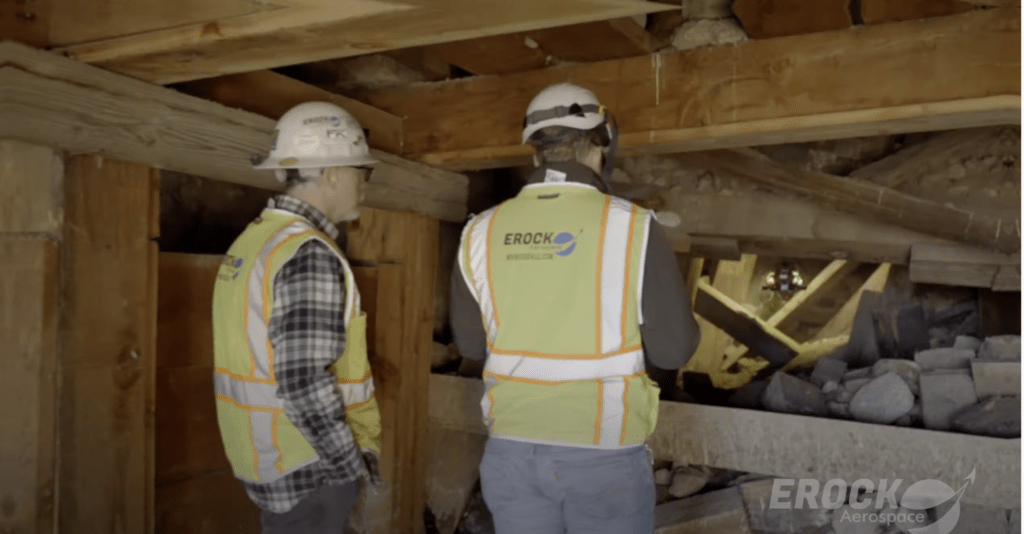
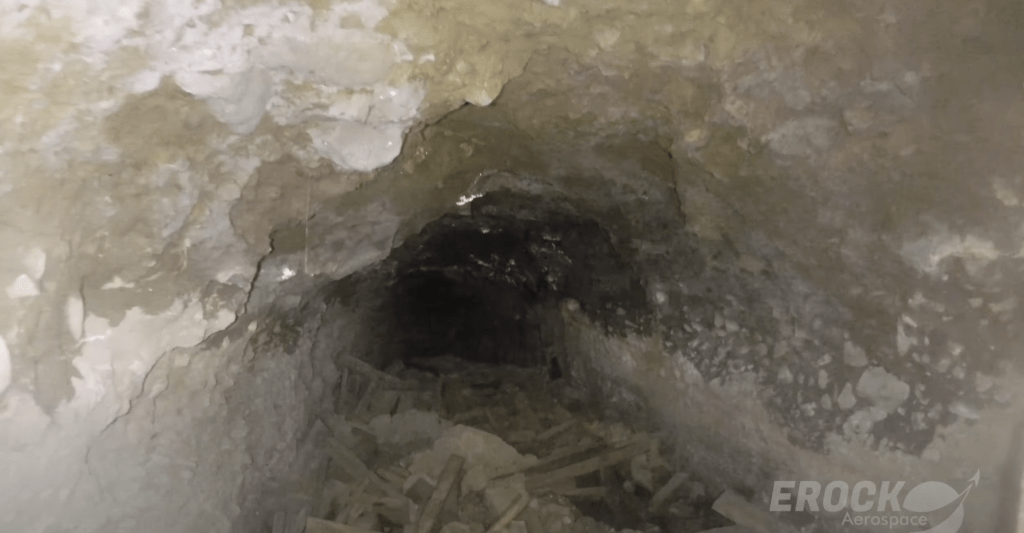
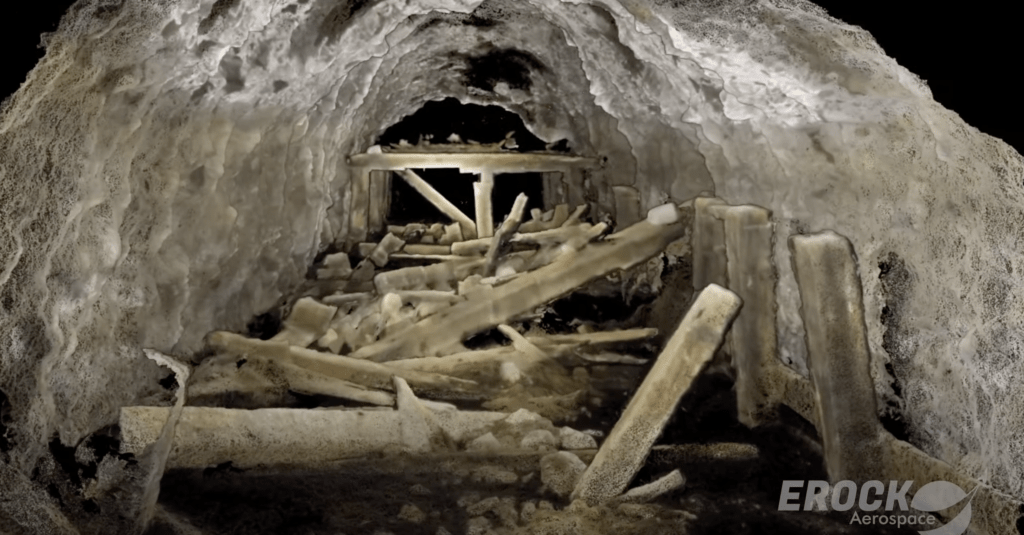
(Photo credit: Friends of Sutro)


Sutro opened a portion of the tunnel so visitors could walk through a piece of Nevada’s history.
A Visit to Sutro Tunnel and Ghost Town
Sutro is open by tour only. Friends of Sutro hosts group tours throughout the year. Better yet, purchase a membership that includes tour tickets. All proceeds are used to restore and preserve Sutro. Contact Sutro Tunnel Site Restoration Project.
Unlike many Nevada ghost towns, Sutro has many original structures, equipment and features to visit. The site is accessible by passenger car. Dirt roads connect the structures and make for easy walking. A trail leads to the mansion site, which is up a hill.
Sutro Portal Facade
Some structures are well-known and identifiable at first glance: Eifell Tower, Westminster Abby, and the Space Needle. However, it is the Sutro Tunnel portal facade for Nevada ghost towners. Even though the famous tunnel and ghost town was shuttered to visitors for decades, the portal facade remained one of the most iconic images of Comstock Lode and Nevada History.
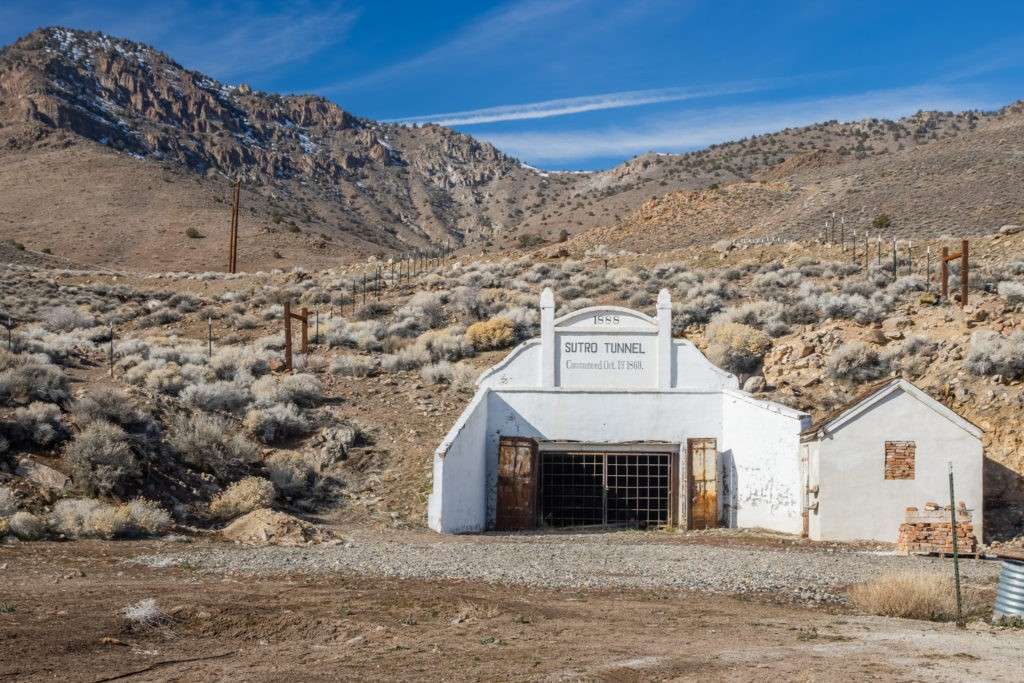
The Sutro Tunnel has been through three incarnations. The First was a simple square beam opening. Then, between 1878 and 1888, the Sutro Tunnel Company added an ornate Greek revival-style facade over the portal entrance.

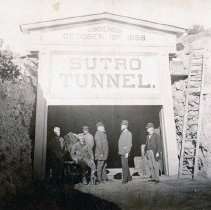
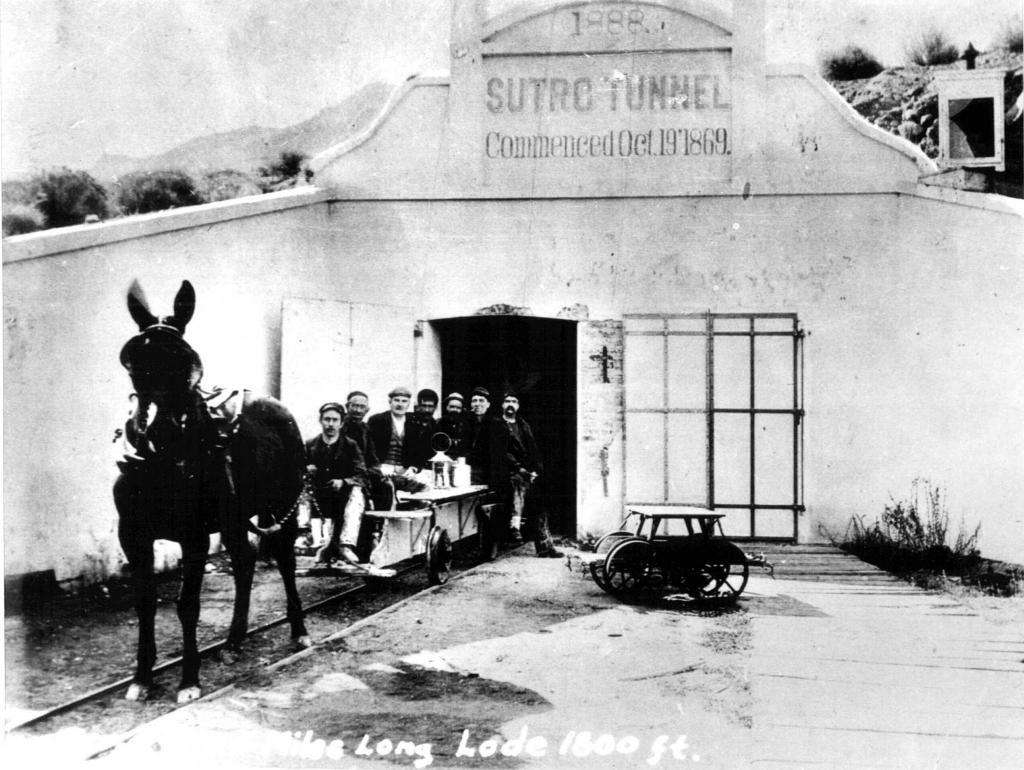
In 1888, a more extensive portal facade adorned the portal. This face was Spanish in style, constructed of plaster covering brick. Heavy metal doors covered two openings, the left side for rail cars and the right for water drainage.
Sutro Pond

The Sutro Tunnel drained 3,500,000 gallons of water daily. Sutro was never content to let a resource or opportunity go to waste. He created a pond with the drainage water and raised frogs, which he sold to Virginia City restaurants.
Mule Barn: No Horsing Around
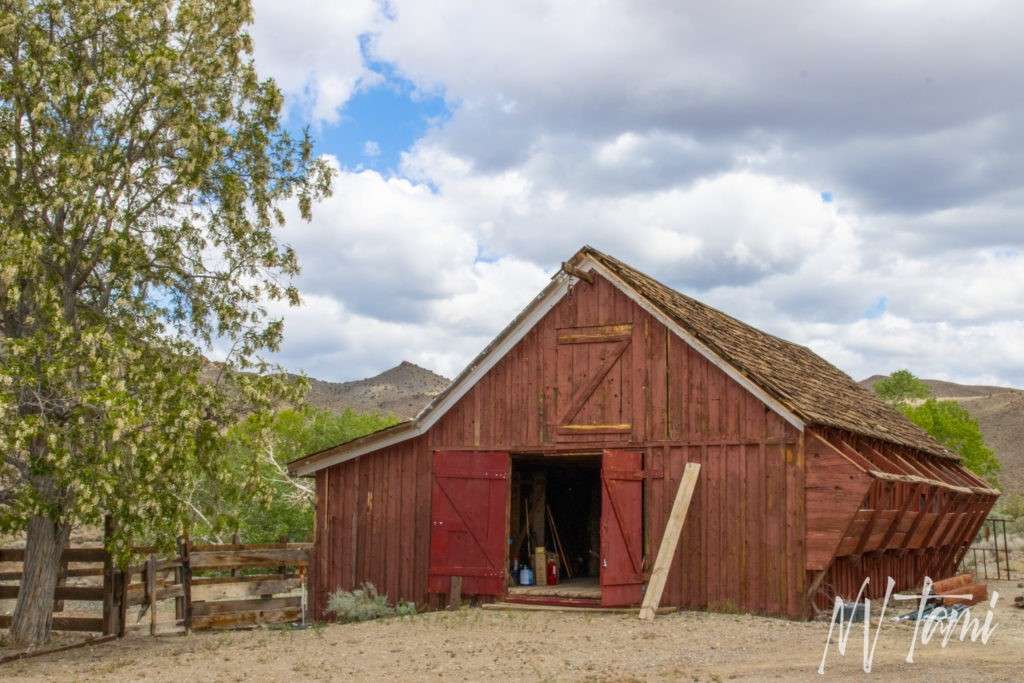
Early in constructing the Sutro Tunnel, Adolph Sutro used horses to haul carts full of waste rock. While powerful animals, he found them to be skittish. Anything that touched their ears would cause them to rear up their head and hurt their skull on the overhanging rock. At the signal of an impending blast, miners had to pull horses to safety.
The little beasts understood the signals perfectly and sought safety as diligently as the men.
Adolph Sutro: A Biography
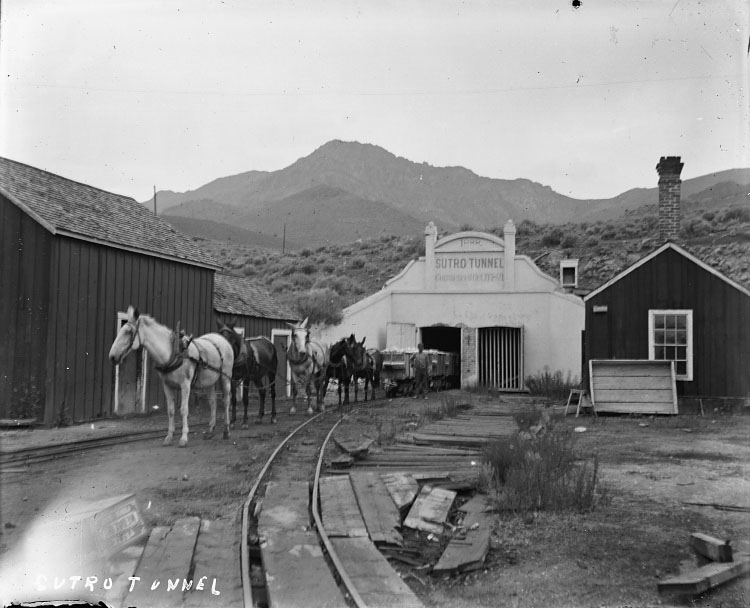
Sutro found mules more efficient and tolerant of working in his tunnel. As the tunnel ceiling was only ten feet tall, they had more clearance to the rock. When startled, they would lower their head, avoiding injury. When miners signaled a blast, mules understood and would seek safety.
Mules also provided comic relief. At lunchtime, they would go from miner to miner to accept treats, pie from one and a cup of coffee from another.
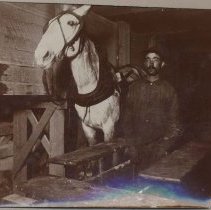
The mule barn is forty by forty-four feet with posts every 18 feet. It included a hayloft, grainery, tack rooms, and a coach and carriage-house wing. The barn could comfortably house twenty mules.
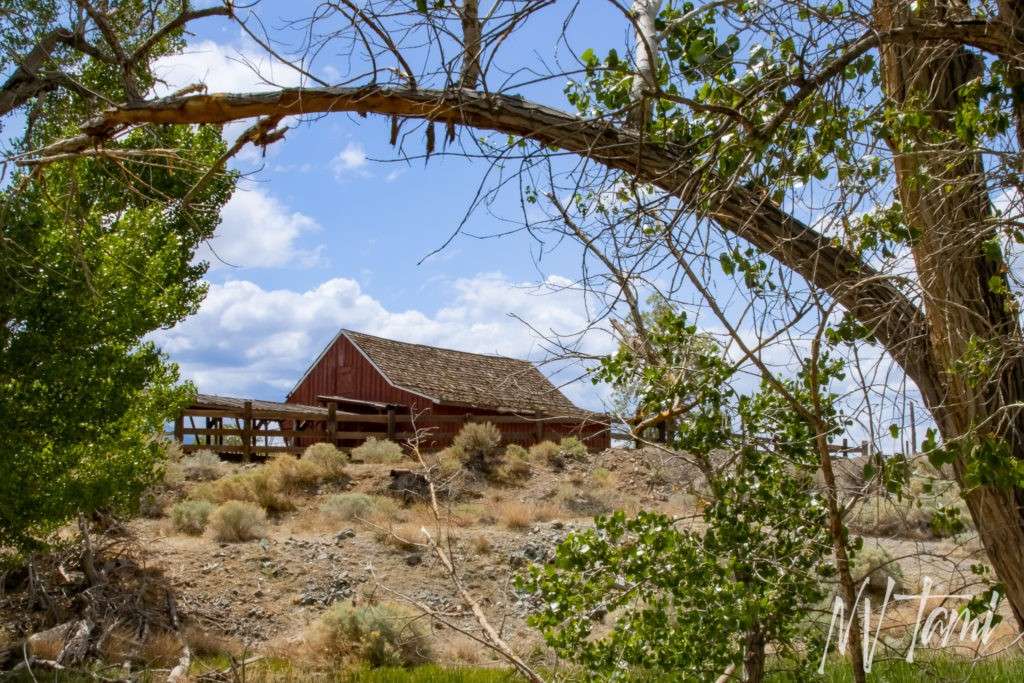
Sutro Mansion
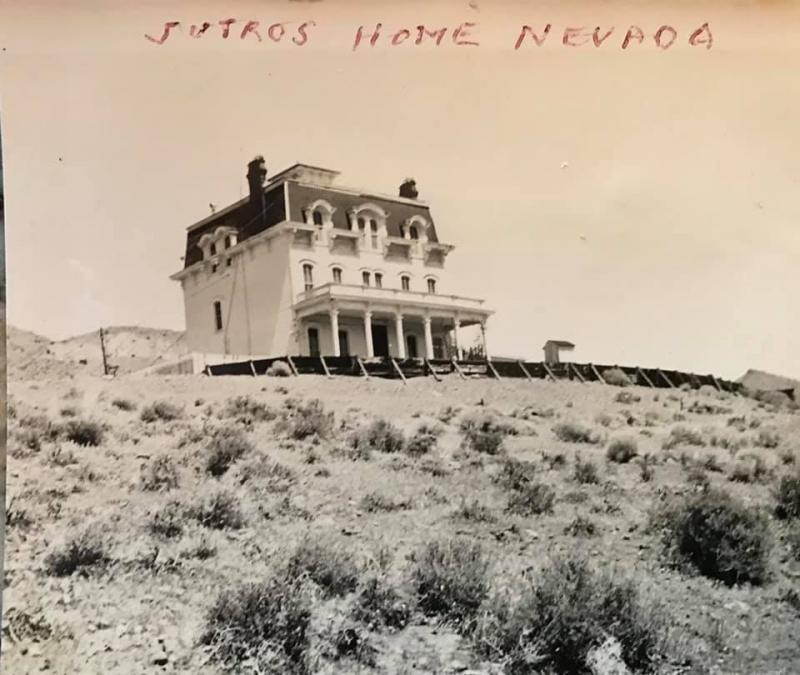
Sutro built a beautiful three-story Greek Revival mansion next to the tunnel and overlooking the frog pond. The home was completed in 1872 and had modern conveniences, including gas lighting and indoor plumbing. Construction and furnishing cost $40,000, close to $1M in 2022.
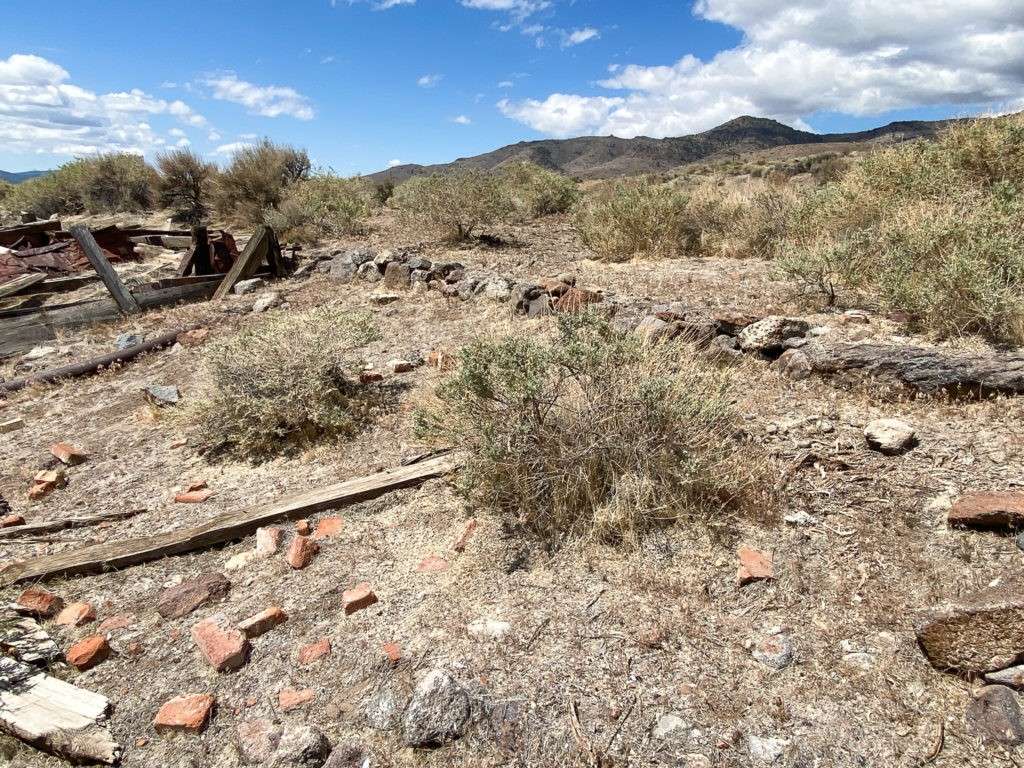
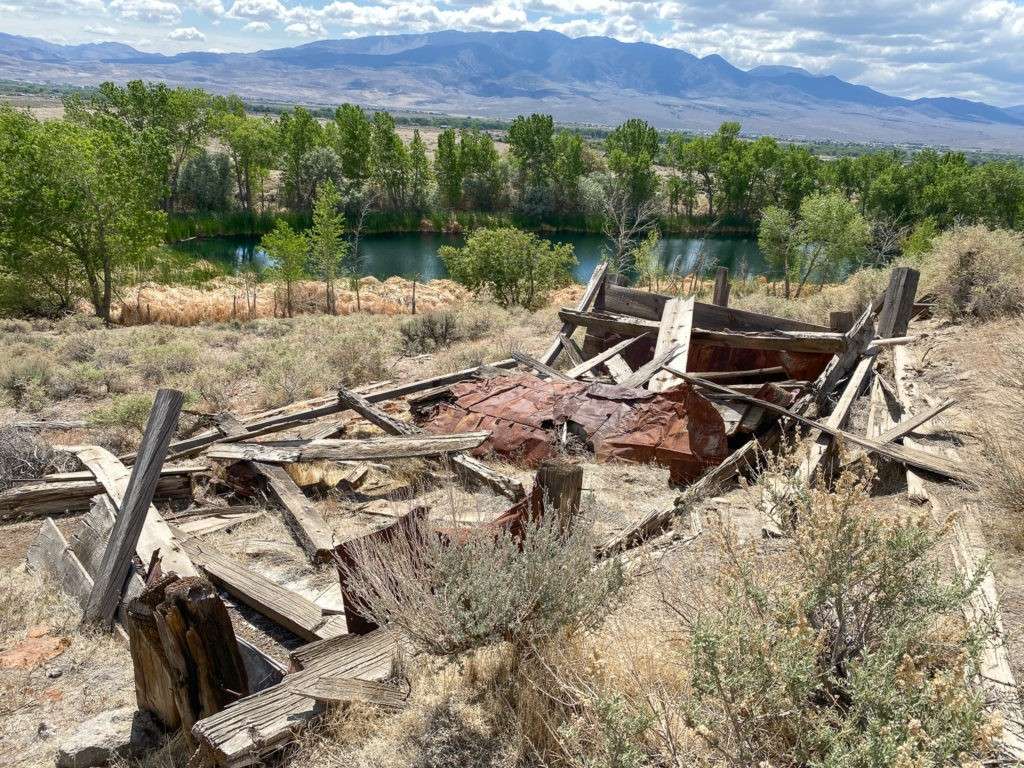
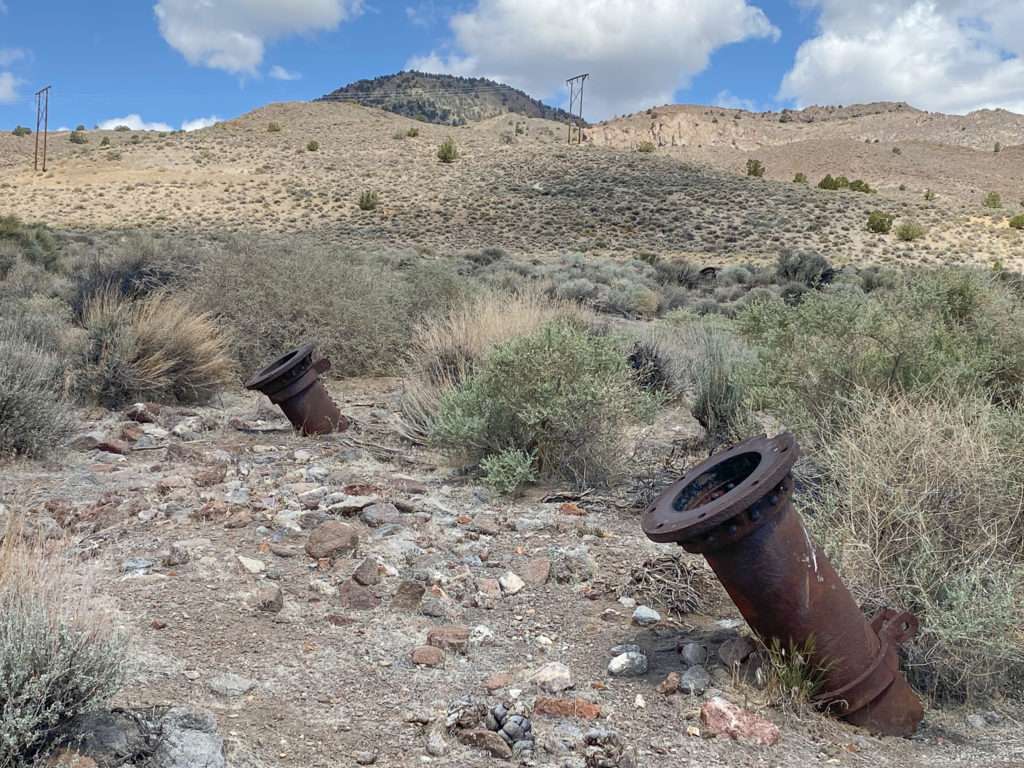
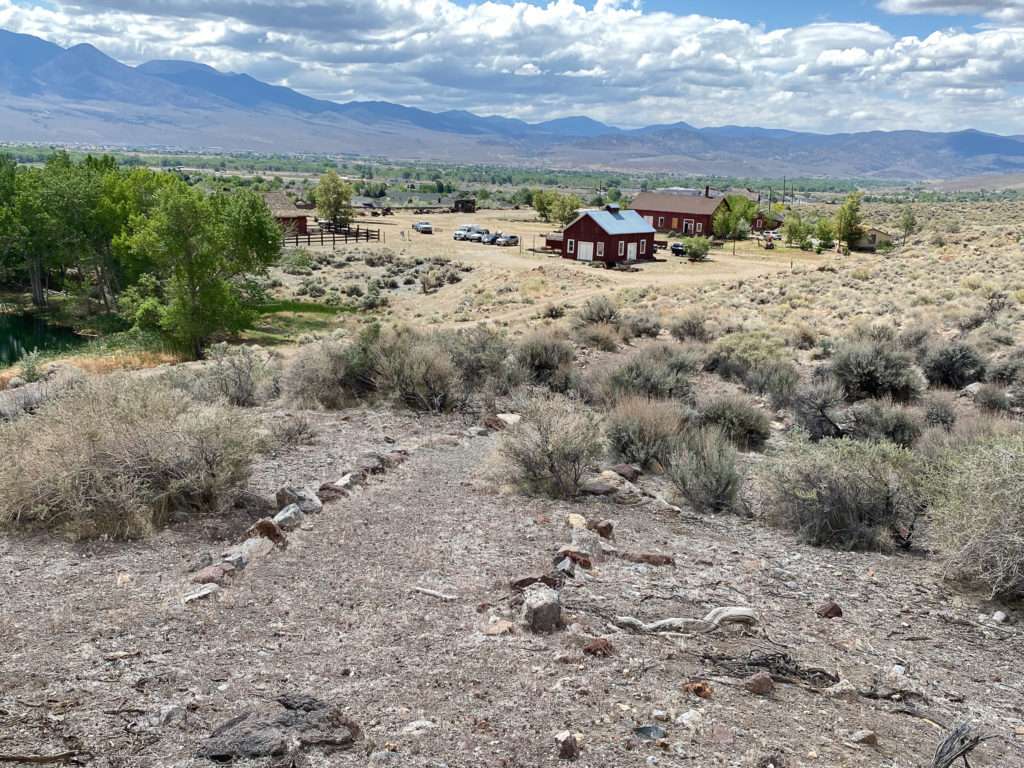
Sadly, a fire destroyed Sutro Mansion, but the foundation and earth anchors which protected the mansion against zephyr winds remain.
Sutro Town
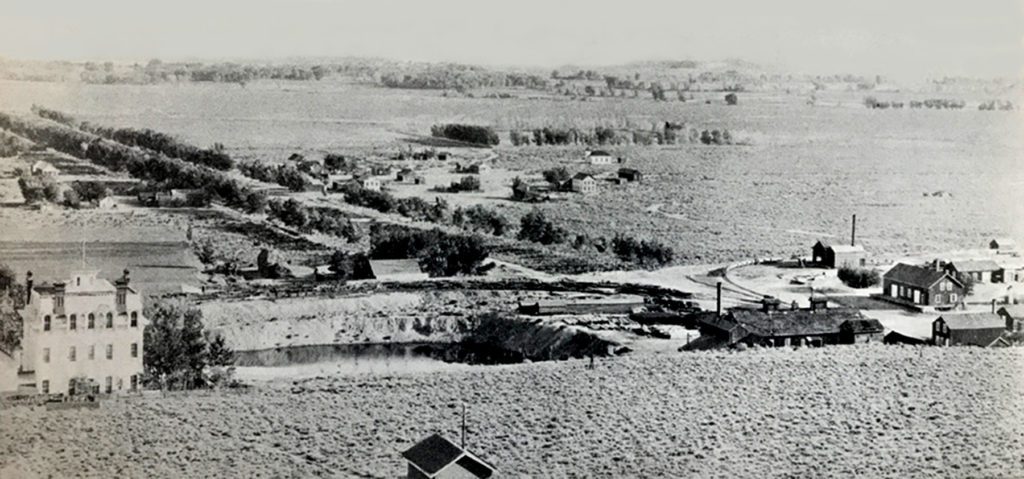
In 1872, Sutro drew plans for a twenty-eight-acre model city. He believed that with the completion of his tunnel, many Comstock residents would move to the new town. The east-west main street was 200′ wide and lined up with the tunnel’s portal. Beautiful trees irrigated by drainage from the tunnel lined the street.
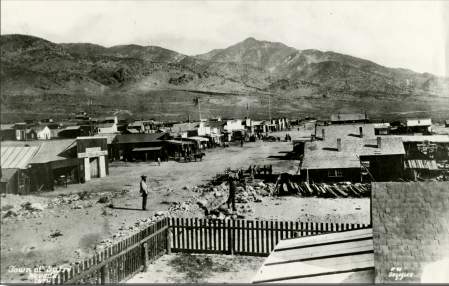
Sutro was a company town and owned most of the buildings. The town had 800 residents and boasted a post office, school, church, and hospital. The Sutro Independent newspaper printed its first issue on July 1, 1875. For recreation, Sutro had four eleven-acre parks. On Saturdays, town folk would ride through the tunnel to attend dances in Virginia City.
After the tunnel’s completion, many residents and buildings were relocated. By 1880, the population of Sutro had halved. Sutro had enough residents to maintain a post office until it closed on October 3, 1920… only 51 years after breaking ground for the tunnel.
Sutro Mill

In 1900, Sutro Tunnel Company built a 10-stamp mill to process ore from the tunnel. Using drainage water from the tunnel, a Pelton Water Wheel powered the mill, later replaced with diesel engines.
On May 21, 1967, a tourist’s cigarette started a fire that soon engulfed the mill. The surviving machinery was salvaged and arranged according to its use.
Machine Shop
The machine shop is a large building, 36′ by 96′. It was well stocked with various equipment, including drills, air compressors, saws, and several lathes. The building now serves as a museum with pictures, artifacts, and information.

Warehouse
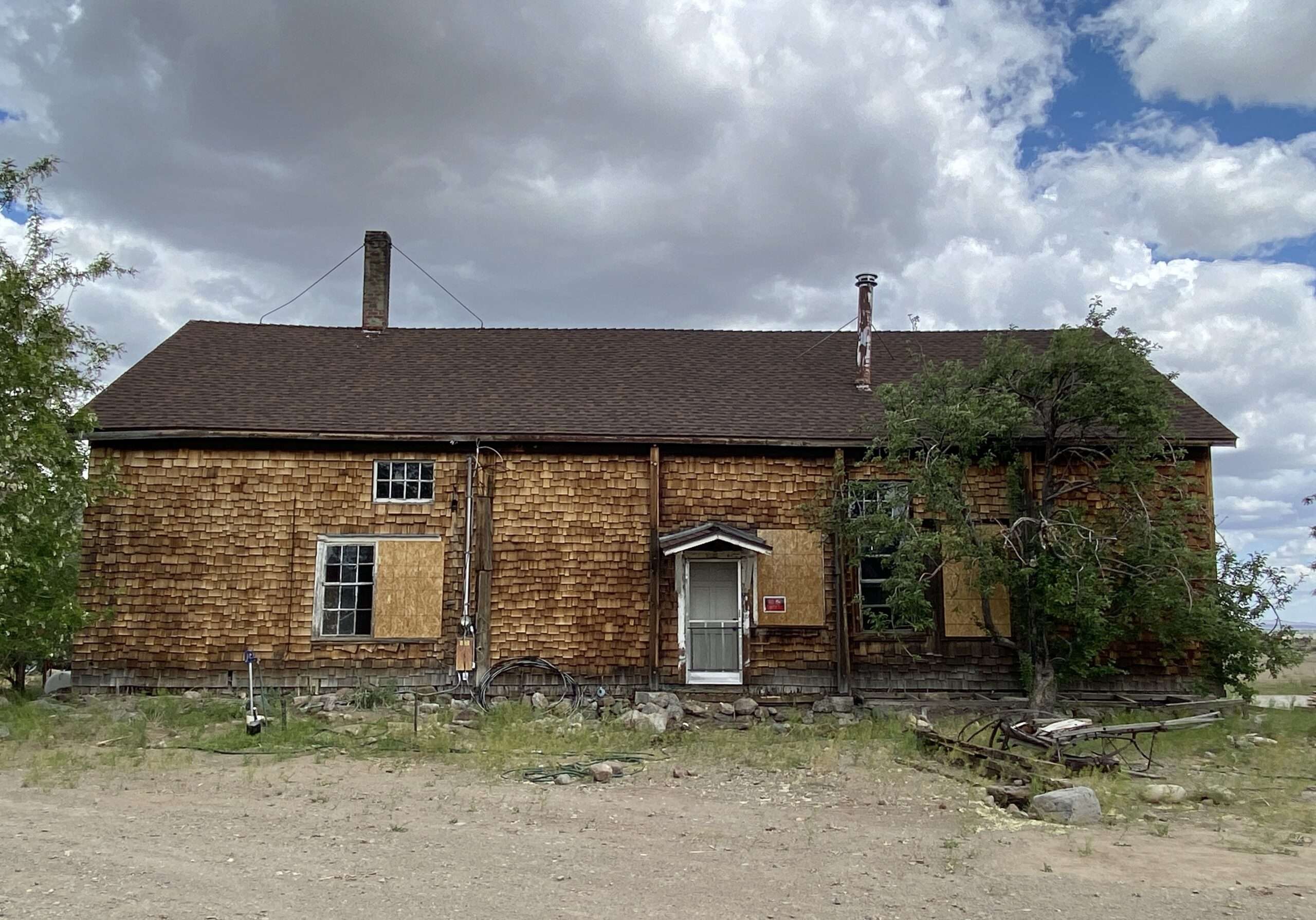
Sutro constructed a warehouse in 1827. It included an office and sleeping area for staff.
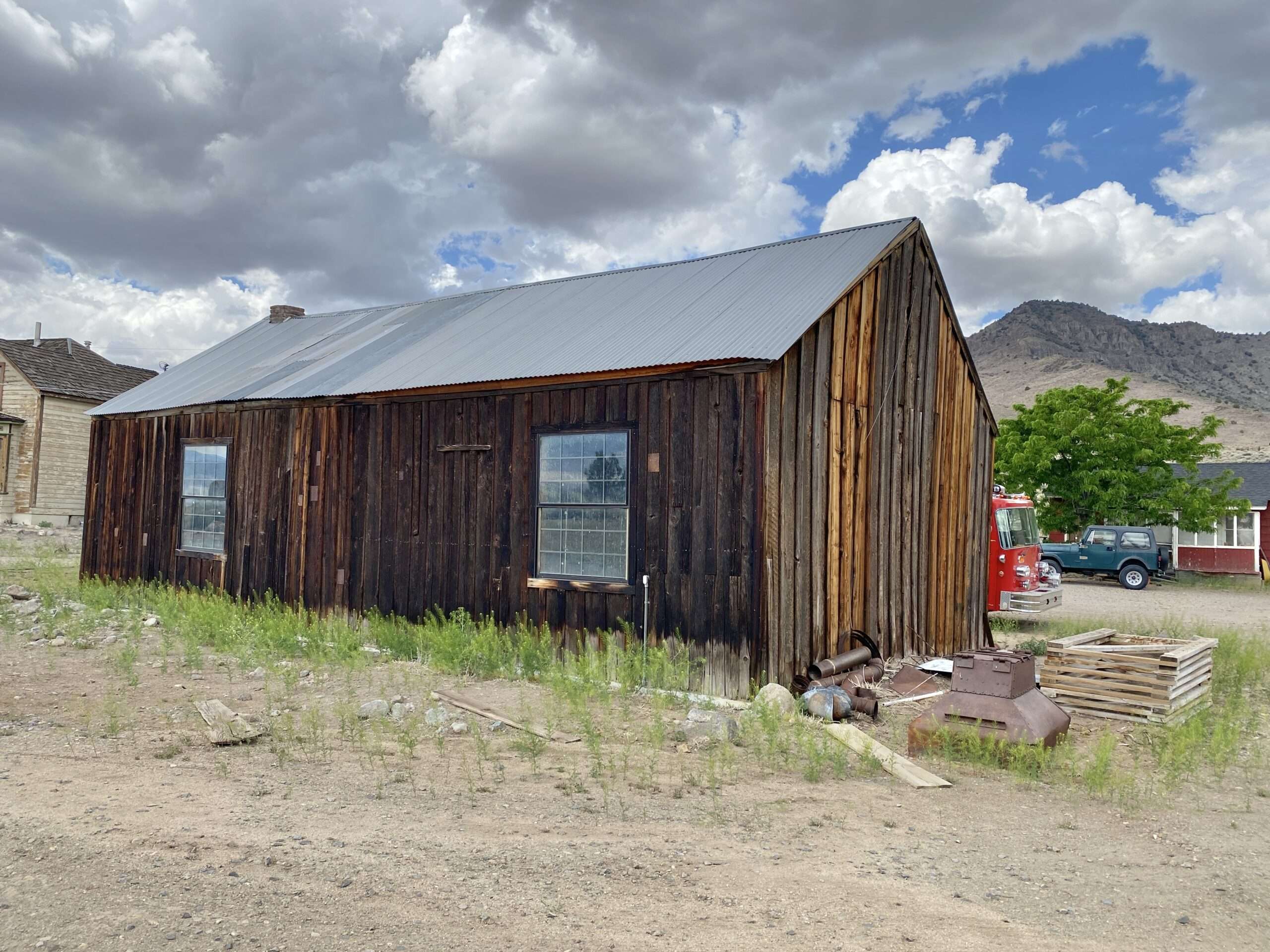
Historical Carson City Houses
Two historical homes were relocated to Sutro from Carson City.
Schulz Victorian House
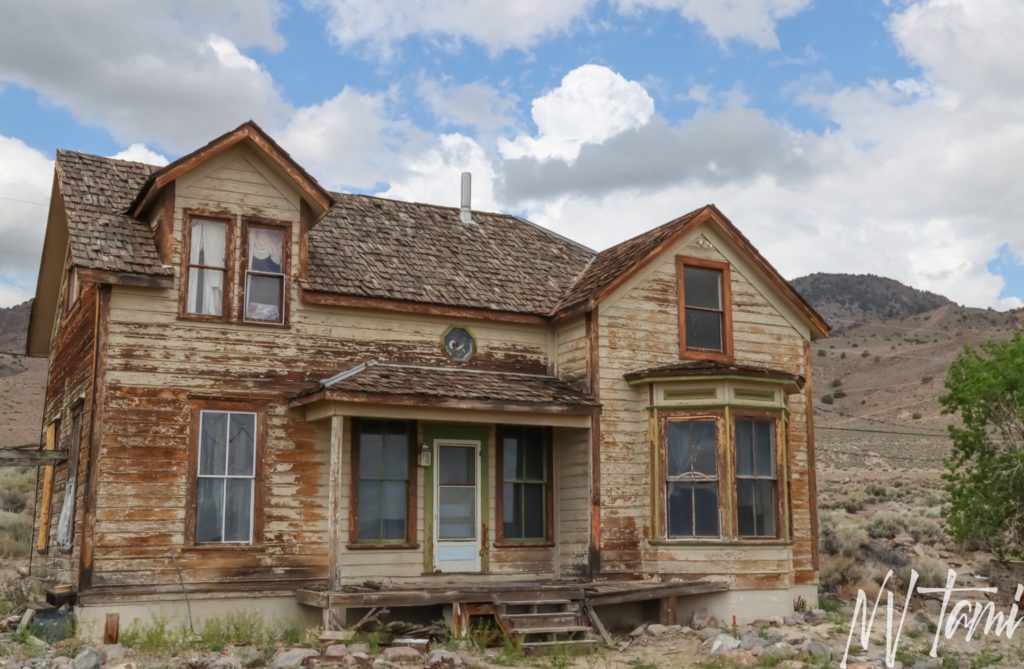
The large Victorian house once belonged to John and Helen Schulz and was relocated to Sutro in the 1970s.
Rosa May House
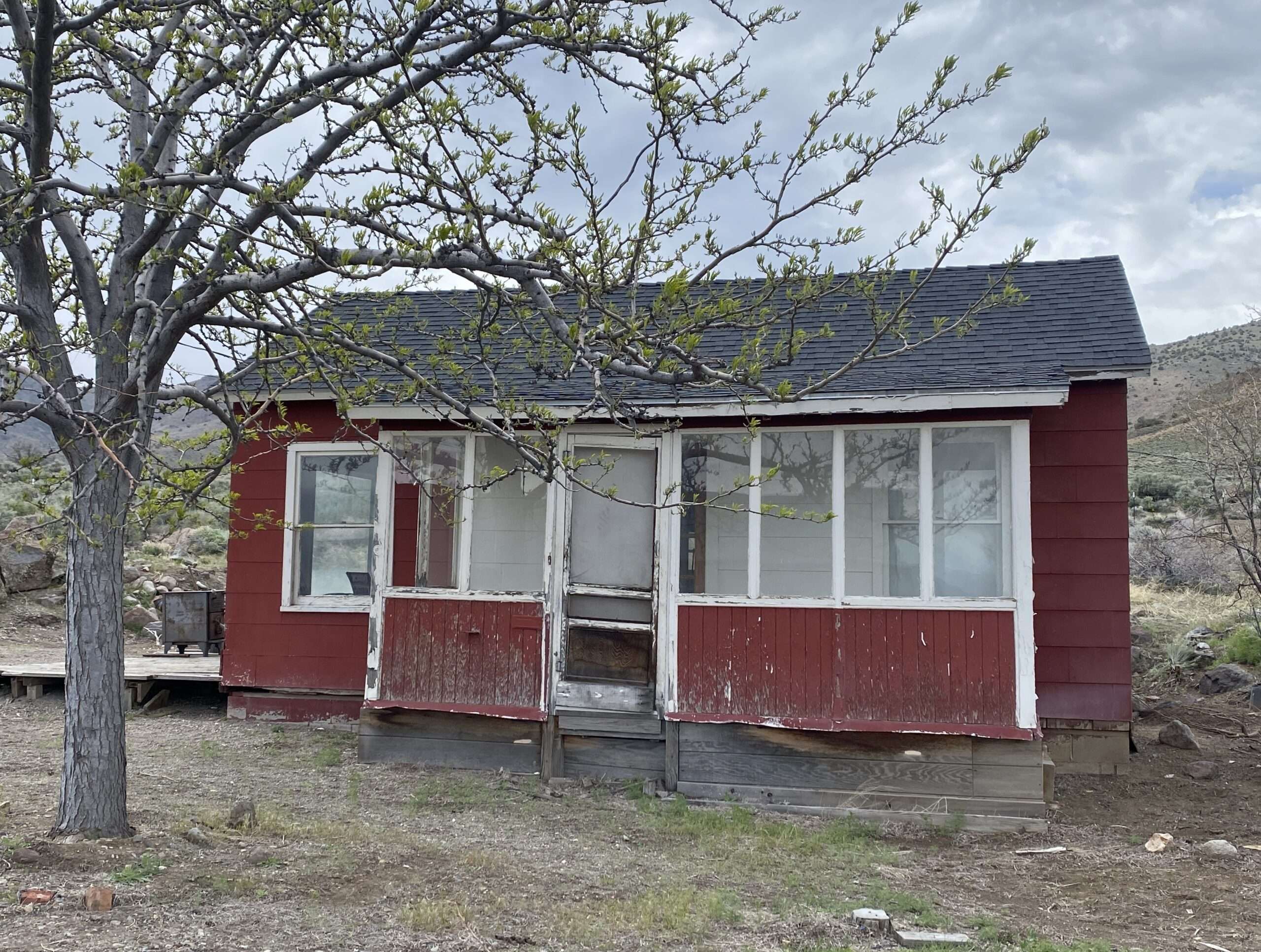
Rosa Elizabeth White, better known as Rosa May, was a prostitute in Virginia City and Carson City areas. She moved to Bodie, California in the 1890s. Some referred to Rosa as the “Hooker with a heart of gold.” Rosa’s Carson City house was moved to Sutro and is now the caretaker’s home.

Outbuildings & Equipment

WANT MORE GHOST TOWNS?
For information on more than three hundred ghost towns in Nevada, visit Nevada Ghost Towns Map or a list of Nevada ghost towns.

For information on more than 300 ghost towns in Nevada, visit Nevada Ghost Towns Map
References
- AP News: Group restoring historic Comstock-area town of Sutro, Nevada
- Carlson, Helen S. Nevada Place Names: A Geographical Dictionary. University of Nevada Press, 1974. Page 227.
- Clairitage Press: A Photo visit to the Sutro Tunnel
- De Quille, Dan. The Big Bonanza. Nevada Publications, XXXXX pages, 124, 241, 387.
- Gamett, James and Stan Paher. Nevada Post Offices: An Illustrated History. Nevada Publications, 1863. Page 124.
- Lord, Eliot. Comstock Mining and Miners. Howell-North Books, 1959.
- Lyon County Appraisers Office: Parcel Search
- Nevada Mining Organization: Nevada Mining Ingenuity: The Sutro Tunnel
- Paher, Stanley. Nevada Ghost Towns and Mining Camps. Nevada Publications, 1970. Page 74.
- Paher, Stanley. Nevada Ghost Towns and Desert Atlas. Nevada Publications, 2009. Page 7, 9.
- Reno Gazette-Journal: Sutro Tunnel spoils at center of Dayton history debate
- Shamberger, Hugh A. The Story of Water Supply for the Comstock. United States Department of the Interior, 1972. Pages 8, 22, 31, 32, 33, 34, 36, 37, 39, 40, 41.
- Smith, Grant H. The History of the Comstock Lode. University of Nevada Press, 1998. Pages 296-298.
- Society of Archeological Historians: Sutro Tunnel
- Stewart, Robert E., and M.F. Stewart. Adolph Sutro: A Biography. Howell-North Books. 1964.
- The Sutro Tunnel Organization: Restoring the historic Sutro Tunnel site
- Western Mining History: Sutro, Nevada
- Wikipedia: Sutro Tunnel
Dellilah says
A fantastic write up of the Sutro Tunnel, thank you!! I’ve known of the Sutro tunnel for many years, and knew it was on private land. But all I knew and the photos I had seen was the entrance to the tunnel, I had no idea there were other structures in the area. I do have a book on Rosa May, I believe she is buried in Bodie, outside the fence of the cemetery because of her ‘profession’. Sadly, by the time the tunnel was completed mining in Virginia started to slow down, as described in a book i have. I look forward to doing the tour one day.
Tami says
You should do the tour! Thanks for reminding me; I’ll be down at Bodie soon and will look for Rosa May’s grave. It is sad that some were seen as undesirable and buried outside the cemetery.
Tammy M. says
Sutro Tunnel & area is a wonderful place to visit. The non profit “Friends of Sutro Tunnel” is doing a wonderful job restoring everything back to as original as possible.
I’ve toured & volunteered & thoroughly enjoy my time when I visit.
Tami says
I am very proud to have worked with Friends of Sutro, an amazing group of people who spread the word about tours.
Dave says
Another great article. And the photos are marvelous. Keep up the good work!
Tami says
Thank you! I’m glad you enjoyed the article and photos. Sutro has a special place in my heart.
Chuck says
Tami, thanks for all the effort you put into your posts, extremely thorough, and definitely most interesting…. I look forward to your articles showing up in my inbox, and ALWAYS read every word, from beginning to end.
Keep it up young lady
Tami says
Ah, thank you, that made my day. I’m so glad you have enjoyed the articles and my travels. And thank you for the “young lady!”
Richard Mcgrew says
Great story
Tami says
Thank you, glad you enjoyed it.
Anonymous says
Tami,
Nice write up, thanks.
Unfortunately, the mansion and the mill were lost to fires.
Jim
Tami says
Thank you. Sutro is a favorite project for me.
It is very sad that both were lost to fire. They can’t bring them back, but it might be fun if they recreated the mansion. I can’t imagine what that would cost!
Gorgo Happles says
Where are you come up with this stuff is amazing and darn interesting thank you
Tami says
Sorry, I forgot to attach the references to this article. I’ll add them. I get information from a variety of sources, books, online and historical newspapers.